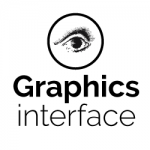Ronald Baecker is a visionary and a Canadian Digital Media Pioneer. He joined the University of Toronto as an assistant professor in the Department of Computer Science in 1972 where, for over four decades, he has been a guiding force in keeping Canada at the forefront of important research areas as they emerge: computer animation, human-computer interaction (HCI), computer-supported cooperative work (CSCW), and most recently the confluence of digital media and patient-centred healthcare, especially for the elderly.
His influence in these and many other areas is in large part due to the organizations he has helped establish, which have nurtured successive generations of Canadian digital media researchers and practitioners.
Ron was a guiding force in developing the Dynamic Graphics Project (DGP) at the University of Toronto into the flagship academic laboratory for computer graphics and human-computer interaction within Canada. With colleagues across a variety of disciplines Ron explored the use of interactive computer graphics in areas as diverse as newspaper layout, debugging and visualization of computer programs, and taxi cab scheduling. His now classic 16mm sound film “Sorting Out Sorting” is one of the earliest examples of using animation techniques to understand the run-time behavior of complex algorithms.
Foreseeing the importance of the Unix revolution before many others did, he founded Human Computer Resources, a company that focused on the development of easy-to-use tools for software development, and later he helped establish one of the early Canadian open source software efforts to support real-time web-casting and archiving of presentations.
As computer technology matured and personal computing became a reality, Ron was one of the people who understood the need to establish human-computer interaction as an independent discipline that drew both from its engineering and its social science roots.
He co-edited two editions of academic readings that helped to define the field of HCI and also a set of readings for computer-supported cooperative work when it was still in its infancy as an emerging sub-discipline of HCI.
As important as these contributions are, perhaps the real legacy Ron has created is bringing together digital media researchers across Canada. In 1982 he was co-chair for the first Graphics Interface conference. Held in Toronto, it transformed the only-in-odd-years conference of the Canadian Man-Computer Communications Society into an annual event and for the first time brought members of the art and design community to join with the scientists and engineers who worked in computer graphics, user interface design, and related areas. Graphics Interface continues to this day, with its sponsoring organization renamed the Canadian Human-Computer Communications Society.
In 1999 Ron founded the Knowledge Media Design Institute at the University of Toronto, a highly multidisciplinary institute exploring collaborative design in the artifacts of knowledge creation, production and distribution. In 2003, he led the formation of NECTAR, the Network for Effective Collaboration Technology through Advanced Research, that brought the top CSCW researchers from across Canada into an NSERC- and industry-funded strategic network that laid the groundwork for two networks that followed, the NSERC strategic network SurfNet that focuses on nontraditional digital display surfaces including multi-touch screens, tabletops, and wall-sized displays, and GRAND, a federally funded network of centres of excellence in digital media.
Ron has inspired multiple generations of Canadian digital media researchers. The projects and organizations he has initiated are lasting testaments to his vision. His intellectual children and grandchildren have secured a global presence for Canada in the field of digital media. It is for these outstanding accomplishments that Ronald Baecker is recognized as a Canadian Digital Media Pioneer.
Biography
Born in 1942, Ronald Baecker received his BSc in physics, his MSc in electrical engineering, and his PhD in computer science at MIT, after early interest and recognition in science during high school. His doctoral dissertation on interactive computer-mediated animation included both algorithmic and sketch-based components that could be parameterized using an interactive picture processing language. After serving as a commissioned officer in the US National Institute of Health he joined the Department of Computer Science at the University of Toronto, where he has remained except for leaves when he was establishing the companies HCR Corporation and Expresto Software Corporation. Much of his research was conducted in the Dynamic Graphics Project. In 1999 he founded the Knowledge Media Design Institute, where he is chief scientist. He directs the Technologies for Aging Gracefully Laboratory (TAGlab), and he is an affiliated scientist in the Kunin-Lunenfeld Applied Research Unit at Baycrest. Ron was the founding Bell Universities Laboratories Chair in Human-Computer Interaction, which he held from January 2002 to December 2011.
Ron has published over 175 papers and articles on human-computer interaction and user interface design, user support, software visualization, multimedia, computer-supported cooperative work and learning, the Internet, entrepreneurship and strategic planning in the software industry, and the role of information technology in business. He is the author or co-author of two published videotapes and four books, and co-holder of two patents. One of the 60 Pioneers of Computer Graphics named by ACM SIGGRAPH, he is an ACM fellow, a member of the CHI Academy, and he received the Canadian Human-Computer Communications Society Achievement Award in 2005.
Selected Works
Baecker, R.M. (1969). Picture-Driven Animation. Proceedings 1969 Spring Joint Computer Conference, May, 273-288 (Reprinted in H. Freeman (Editor), Tutorial and Selected Readings in Interactive Computer Graphics, IEEE Computer Society, 1980, 332-347).
Baecker, R. M., & Marcus, A. (1989). Human factors and typography for more readable programs. ACM.
Mantei, M.M., Baecker, R.M., Sellen, A.J., Buxton, W.A.S., Milligan,T., and Wellman, B. (1991). Experiences in the Use of a Media Space. Proceedings ACM SIGCHI CHI’91, 203-208.
Baecker, R., Small, I., & Mander, R. (1991, March). Bringing icons to life. In Proceedings of the SIGCHI Conference on Human Factors in Computing Systems (pp. 1-6). ACM.
Posner, I.R., and Baecker, R.M. (1992). How people write together. Proceedings 25th Hawaii International Conference on System Sciences, Vol. IV, 127-138.
Baecker, R. M., Nastos, D., Posner, I. R., & Mawby, K. L. (1993, May). The user-centered iterative design of collaborative writing software. In Proceedings of the INTERACT’93 and CHI’93 conference on Human factors in computing systems (pp. 399-405). ACM.
Baecker, R. M. (1993). Readings in groupware and computer-supported cooperative work: Assisting human-human collaboration. Morgan Kaufmann Pub.
Baecker, R. M. (1995). Readings in Human-Computer Interaction: toward the year 2000. Morgan Kaufmann Pub.
Abrams, D., Baecker, R., & Chignell, M. (1998). Information archiving with bookmarks: personal Web space construction and organization. In Proceedings of the SIGCHI conference on Human factors in computing systems (pp. 41-48). ACM Press/Addison-Wesley Publishing Co..
McGrenere, J., Baecker, R. M., & Booth, K. S. (2002, April). An evaluation of a multiple interface design solution for bloated software. In Proceedings of the SIGCHI conference on Human factors in computing systems: Changing our world, changing ourselves (pp.164-170). ACM.
Baecker, R.M., Moore, G., Keating, D., and Zijdemans, A. (2003) Reinventing the lecture: Webcasting made interactive. Proc. HCI International 2003, June, Lawrence Erlbaum Associates, Volume 1, 896-900.
Wu, M., Baecker, R.M., and Richards, B. (2005) Participatory design of an orientation aid for amnesics. Proceedings ACM SIGCHI 2005.
Massimi, M., Baecker, Ronald M., and Wu, M. (2007). Using participatory activities with seniors to critique, build, and evaluate mobile phones. Proc. Ninth International ACM SIGACCESS Conference on Computers and Accessibility, Tempe Arizona, October, 155-162.






 Photo by Louis Fabian Bachrach
Photo by Louis Fabian Bachrach